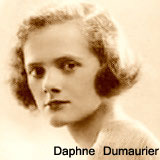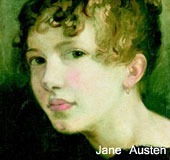Jane Austen's life span (1775-1817) predates the Victorian era by a few years, but the world of which she writes shares its values with those of Victorian England.
The Victorians exalted the family. The home was considered the source of virtue and peace, and the woman's role was to maintain it in that function. Women were idealized as the protectors of spirituality. Men had to go out into a laissez-faire business world, in which honesty and morality were not just a luxury but a weakness; every day, their labors led them further from virtue. Their sole refuge was their home, where their wives would gently help them back onto the path of goodness and integrity, and their children would allow them to feel the "softer" emotions of love and generosity.
This concept of gender roles was extended to sex, as well: women, as chaste spiritual beings--angels, almost--were not expected to enjoy sex. Men were physical creatures whose needs had to be fulfilled, and it was merely one of a wife's more distasteful jobs. One marriage manual of the time advised that the woman should try to make the fulfillment of her "conjugal duty" more bearable by thinking of the Queen. Men were advised to think of sex as a physical function--and to think of it as little as possible. Talking about sex was considered in the worst of taste. Thus, in houses bursting with children, sex was never discussed. (The fact that this created unrealistic expectations of both men and women is reflected in several statistics of the time: in 1851, 42,000 illegitimate children were born in England; by 1850, there were at least 50,000 prostitutes known to the police in England and Scotland, 8,000 of them in London alone.)
The Victorians expected their art to reflect their social values. They considered that a novel written without a clear moral, in which the good were rewarded and the bad were punished, set a dangerous example and had the power to corrupt the fragile moral order. And women novelists were especially suspect, since they didn't adhere to the traditional female roles, and their novels often questioned or criticized the social order.
Perhaps for this reason, Jane Austen was always modest about her novels--at least publicly. In 1816, in a letter to her nephew about her writing and his, she said, "What should I do with your strong, manly spirited sketches, full of variety and glow?--How could I possibly join them on to the little bit (two inches wide) of ivory on which I work with so fine a brush, as produces little effect after much labor?"
Austen's modesty was misplaced. When she wrote that letter, she'd already had four novels published: Sense and Sensibility (1811), Pride and Prejudice (1813), Mansfield Park (1814), and Emma (1816). After her death, two more of her novels were published: Northanger Abbey and Persuasion, both in 1818.
Although Austen wasn't published until she was 36 years old, she wrote most of her novels much earlier, in her teens and early twenties. She was born in Steventon, where her father was the rector and schoolteacher. She was the seventh of eight children. Austen was close to her brothers, but her closest companion was her sister, Cassandra, who was three years older. Both girls were sent away to school for brief periods, but were mostly educated at home, by their father. Her formal education ended when she was 13; from then on, she and Cassandra shared a sitting room where they worked together most days: Jane writing and Cassandra drawing. Most of her novels were written in their early form in that sitting room, beginning in 1797 with First Impressions, the early version of Pride and Prejudice; Elinor and Marianne, the early version of Sense and Sensibility; and Susan, the early version of Northanger Abbey (which was begun in 1797, completed in 1803, but not published until after her death).
In 1801, Jane's father retired and the family moved to Bath. Jane was very unhappy there; she wrote almost nothing for several years; she didn't begin to write seriously again until 1809, after her father's death and after she, Cassandra, and her mother moved to a cottage at Chawton.
Money had never been plentiful for the Austens; now it was a serious concern. Perhaps to help alleviate their financial situation, or perhaps to escape her family's problems (Jane's sister-in-law, Elizabeth, to whom she had been very close, had died in childbirth the previous year), Jane began to write seriously again, and decided it was time to attempt to publish her work. Her novels were initially published anonymously, but their popularity soon led to her identification as their author. But she was never comfortable with her fame, and managed to lead a relatively obscure life.
She died in 1817, 6 years after the publication of her first novel, after being ill for a year. She was 42 when she died. She was mourned by all of her family, but most of all by her sister, Cassandra, who wrote, "She was the sun of my life, the gilder of every pleasure, the soother of every sorrow, I had not a thought concealed from her, and it is as if I had lost a part of myself."
Jane Austen never married. She was certainly in love at least once, and probably more often than that; family legend has it that she fell in love with a young man who died before the relationship could progress to a formal engagement. She once accepted a proposal of marriage, but changed her mind the next day. She had been tempted by financial security to accept the young man's proposal, but by next morning, she found that she could not marry a man she didn't love.
Many of the details of Jane Austen's life remain a mystery. After her death, her sister Cassandra, in an attempt to preserve Jane's privacy, burned a large number of her letters.
At first glance, Austen's novels appear simple; some find them boring. And it is true that they are hardly adventure stories, packed with dark castles or raiding pirates. Austen drew her characters from the world she knew--the world of the country gentry--and limited herself to their social and family lives. The drama of these books takes place on a small stage: "two inches of ivory," as Austen put it. But they are anything but simple. Austen ruthlessly satirizes not only the sentimental romances which were popular in her time, but the self-importance and pride of her own class. As Dorothy Van Ghent points out, that "two inches of ivory...is in substance an elephant's tusk; it is a savagely probing instrument as well as a masterpiece of refinement."
If you'd like more information on any of the topics covered in this lecture, go to the Links page. Enjoy!
Some of the information in this lecture derives from:
1. "On Pride and Prejudice," Dorothy Van Ghent, in the Norton Critical Edition of Pride and Prejudice
2. "Irony and Fiction in Pride and Prejudice," Reuben Brower, in the Norton Critical Edition of Pride and Prejudice
3. Jane Austen: A Life, Claire Tomalin
4. The Victorian Frame of Mind, Walter E. Houghton
5. Victorian People and Ideas, Richard D. Altick


